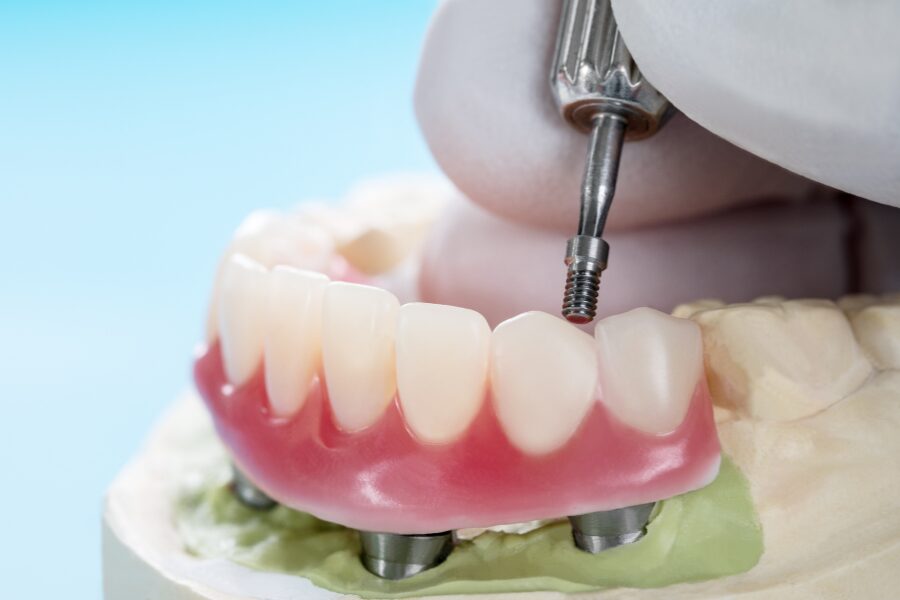Overdenture Fittings: Tips and Tricks for Dental Professionals
Dental prosthetics have come a long way, evolving from ancient times’ rudimentary replacements to today’s sophisticated, life-like options. Among these advancements, overdentures stand out as a beacon of hope for patients seeking a blend of functionality, comfort, and aesthetics. However, crafting and fitting overdentures that patients can wear with confidence involves more than technical skill; it requires understanding, patience, and a touch of artistry. This blog post aims to unravel the secrets behind successful overdenture fittings, offering insights for both budding and seasoned dental professionals.
Before diving deep into the specifics, it’s essential to establish what overdentures are. Essentially, overdentures are a type of denture that is supported by and attached to either natural teeth or dental implants. They offer a more stable and comfortable option for patients compared to traditional dentures, primarily because they don’t rely solely on the gums for support.

The Foundation of Overdenture Success: Precise Planning and Assessment
The first step towards a successful overdenture fitting is a thorough planning and assessment phase. This includes a comprehensive evaluation of the patient’s oral health status, bone density (if implants are involved), and their specific needs and expectations. Here are some key points to consider:
- Detailed oral examination: This involves checking the condition of any remaining teeth, gum health, and overall oral hygiene.
- Imaging and measurements: X-rays, CT scans, and detailed measurements are crucial for planning the placement of implants or modifications to existing teeth.
Unveiling the Patient’s Desires
An often-overlooked aspect of the planning phase is understanding what the patient hopes to achieve with their overdenture. Some might prioritize comfort, while others could be more concerned with how natural the dentures look or how they will affect their speech. Engaging in open conversations helps in tailoring the overdenture to meet these personal preferences.
The Selection Process: Materials and Design
The choice of materials and design plays a pivotal role in the functionality and aesthetic appeal of overdentures. With advancements in dental technology, there’s a plethora of options available, each with its pros and cons.
- Materials: From acrylics to composites, and porcelain, the choice of material affects the overdenture’s durability, look, and feel.
- Design considerations: Factors like the shape and shade of the prosthetic teeth, the type of attachment system (bar-retained, ball-retained, etc.), and the fit over natural teeth or implants must be meticulously planned.
Understanding the nuances of each material and design option can significantly enhance the outcome of an overdenture fitting.
Mastery in Execution: Precision in Fabrication and Fitting
The actual fabrication and fitting of the overdenture are where the rubber meets the road. Here, precision is key. Employing state-of-the-art technology like CAD/CAM systems can greatly enhance accuracy. However, technology alone isn’t enough. The human touch, honed by experience and an understanding of dental aesthetics, is irreplaceable.
The Role of Adjustments and Revisions
It’s rare for an overdenture to fit perfectly on the first try. Small adjustments and revisions are often necessary to achieve the ideal fit, comfort, and look. This process might involve:
- Trial and error: Trying different adjustments to address any discomfort or misalignment.
- Patient feedback: Incorporating the patient’s feedback after wearing the overdenture for a short period can provide valuable insights for refinements.
Patience and an open line of communication with the patient during this phase are crucial.
Maintenance and Care: Ensuring Longevity
The journey doesn’t end with the fitting of the overdenture. Educating patients on proper care and maintenance is pivotal for the longevity and success of their new prosthetics. This includes regular cleaning, handling instructions, and scheduling follow-up visits to monitor the condition of both the overdenture and the patient’s oral health.
Regular Check-ups
Encouraging patients to adhere to a regular check-up schedule helps in catching any issues early on and making necessary adjustments. These visits are also an opportunity to reassess the patient’s satisfaction and comfort with their overdenture.
Personalized Care: The Heart of The Matter
At the core of successful overdenture fittings is the principle of personalized care. Each patient comes with their unique set of challenges, preferences, and expectations. The ability to tailor the treatment to fit these individual needs, coupled with technical skill, can make all the difference.
Overdenture fittings is a blend of science, art, and empathy. The technical aspects, while crucial, must be balanced with a deep understanding of the patient’s perspective and a commitment to personalized care. Whether you’re a seasoned prosthodontist or a dental student just starting, remember that each overdenture fitting is more than a procedure—it’s an opportunity to profoundly impact someone’s life.
If you found this insightful, consider sharing it with your colleagues or engaging with us through comments. We’d love to hear your thoughts, experiences, and tips on the topic of overdenture fittings. Together, let’s continue to refine our craft for the benefit of our patients.



Leave a Reply
Want to join the discussion?Feel free to contribute!